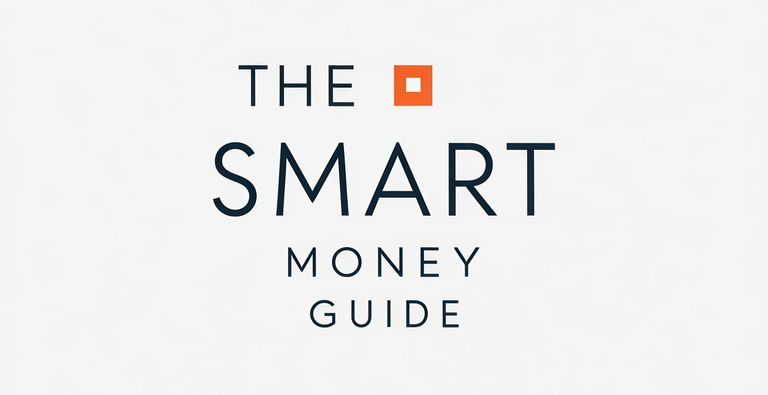How to Create a Realistic Budget That Works for You
BUDGETING
2/7/20254 min read


Are you tired of feeling like your money slips through your fingers? Do you dream of financial freedom but don't know where to start? The key to achieving your financial goals lies in creating a realistic budget. Many people avoid budgeting because they think it's restrictive or complicated. However, a well-crafted budget isn't about deprivation; it's about empowerment. It's about understanding where your money goes and making conscious choices about how to use it. This comprehensive guide will walk you through the steps of creating a budget that works for you, helping you take control of your finances and build a brighter future.
Why a Realistic Budget Matters
A budget is more than just numbers on a spreadsheet; it's a roadmap to your financial dreams. It allows you to see the big picture, identify areas where you can save, and make progress towards your goals. A realistic budget is crucial because it's sustainable. Overly restrictive budgets often lead to frustration and failure, causing people to abandon the process altogether. On the other hand, a budget that doesn't account for all your expenses won't be effective. The key is personalization. Your budget should reflect your unique income, expenses, and financial goals.
Common Pitfalls of Unrealistic Budgets
One common mistake is creating a budget that's too restrictive. Cutting out all the things you enjoy is a recipe for burnout. Another pitfall is failing to account for irregular expenses, like annual subscriptions or holiday gifts. These unexpected costs can throw off your budget and lead to overspending. Finally, many people underestimate their expenses, leading to a budget that doesn't accurately reflect their spending habits.
Importance of Personalization
There's no one-size-fits-all approach to budgeting. What works for your friend or family member might not work for you. Your budget should be tailored to your specific circumstances, including your income, expenses, debt, and financial goals. Take the time to understand your own financial situation and create a budget that aligns with your values and priorities.
Step 1: Assess Your Income and Expenses
The foundation of any successful budget is a clear understanding of your income and expenses. This involves tracking where your money comes from and where it goes.
Techniques for Tracking Expenses
There are several ways to track your expenses. Spreadsheets are a classic option, allowing for detailed categorization and analysis. Numerous budgeting apps are also available, offering features like automatic transaction tracking and spending reports. Consider trying a few different methods to find what works best for you. For example, you could use a spreadsheet for a high-level overview and an app for daily tracking.
Tips for Accurately Documenting All Sources of Income
Documenting your income is usually straightforward, but it's important to be thorough. Include all sources of income, such as salary, wages, side hustles, and investments. If you have variable income, such as freelance work, calculate an average based on your past earnings.
Step 2: Set Clear Financial Goals
Once you understand your income and expenses, you can start setting financial goals. Having clear goals will give you a purpose for your budget and motivate you to stick to it.
Short-Term vs. Long-Term Goals
Your financial goals can be short-term or long-term. Short-term goals might include building an emergency fund or paying off a small debt. Long-term goals could be buying a house, saving for retirement, or funding your children's education.
Identifying “Needs” vs. “Wants”
Distinguishing between needs and wants is crucial for effective budgeting. Needs are essential expenses, such as housing, food, and transportation. Wants are non-essential items, like entertainment, dining out, and impulse purchases. Prioritizing your needs over your wants will help you stay on track with your budget.
Step 3: Choose a Budgeting Method
Several budgeting methods can help you manage your finances. Here are a few popular options:
Envelope Method
The envelope method involves allocating cash to different spending categories and placing it in labeled envelopes. This method can be helpful for visualizing your spending and limiting impulse purchases.
50/30/20 Rule
The 50/30/20 rule suggests allocating 50% of your income to needs, 30% to wants, and 20% to savings and debt repayment. This method provides a simple framework for budgeting.
Zero-Based Budgeting
Zero-based budgeting involves allocating every dollar of your income to a specific category, ensuring that your total expenses equal your total income. This method provides a high level of control over your finances.
Pros and Cons of Each
Each budgeting method has its own pros and cons. The envelope method is simple but can be cumbersome. The 50/30/20 rule is easy to follow but may not be suitable for everyone. Zero-based budgeting requires more effort but offers greater control. Consider your individual needs and preferences when choosing a budgeting method.
Step 4: Monitor and Adjust Regularly
Budgeting is not a one-time activity; it's an ongoing process. Regularly monitoring and adjusting your budget is essential for its success.
Importance of Monthly (or Weekly) Reviews
Reviewing your budget monthly (or even weekly) allows you to track your progress, identify areas where you're overspending, and make necessary adjustments. This helps you stay on track and achieve your financial goals.
Common Budgeting Mistakes and How to Avoid Them
One common mistake is failing to track expenses accurately. Another mistake is not reviewing your budget regularly. To avoid these mistakes, use a reliable tracking method and schedule regular budget reviews. Also, be flexible and willing to adjust your budget as your circumstances change.
Conclusion
Creating a realistic budget is a powerful step towards financial freedom. It's not about restricting yourself; it's about making conscious choices about how to use your money. By following the steps outlined in this guide, you can create a budget that works for you, helping you achieve your financial goals and live a more secure and fulfilling life. Remember to stay flexible and adjust your budget as life changes. Budgeting is a journey, not a destination. Embrace the process, celebrate your progress, and don't be afraid to seek help if you need it. Start today and take control of your financial future!
(Note: This blog post provides general information about budgeting and should not be considered financial advice. Consult with a qualified financial advisor for personalized guidance.)
Connect
Join our community for financial insights and helpful tips.
Newsletter
© 2024. All rights reserved.
Get the latest financial tips and insights.
